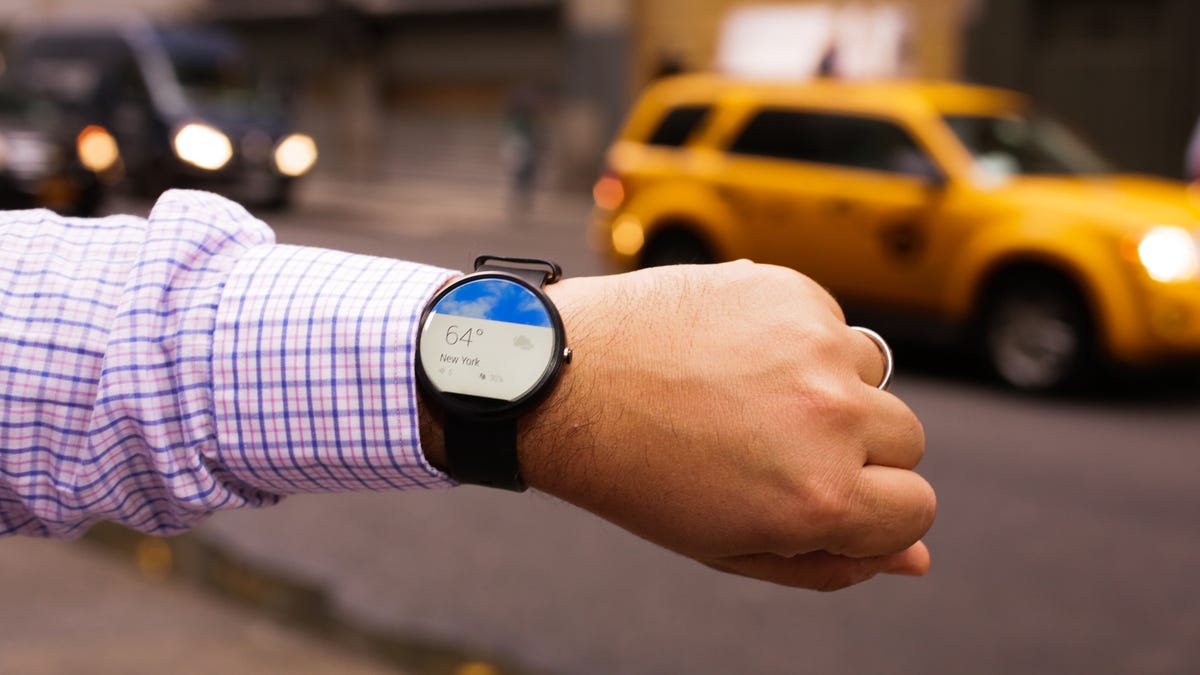
Sarah Tew/CNET
LAS VEGAS — Motorola Mobility sets itself apart from the mobile industry by giving customers vast customization options for its Moto X smartphone, which can be tweaked and personalized on its MotoMaker website.
So could Motorola bring those MotoMaker capabilities to wearables such as its Moto 360 smartwatch this year?
“Could be,” Motorola Chief Operating Officer Rick Osterloh said in an interview Tuesday. “We have no major announcements in this area, but I think your intuition is very good.”


Sarah Tew/CNET
The diverse mix of personalization options found in MotoMaker could be a key advantage for Motorola as it seeks to stake a claim in the burgeoning area of smartwatches. The tech industry believes wearables will be the next source of explosive growth at a time when smartphones, PCs and tablet businesses have reached saturation. Research firm IDC projects that the number of wearable products that ship will increase by sixfold to 111.9 million units by 2018.
Last year saw the market flooded with smartwatches, although consumers’ excitement has yet to match the industry’s enthusiasm for the segment. Motorola stood out with its Moto 360 thanks to its round design, which better emulates a traditional watch, as well as its use of premium materials like steel and leather. Osterloh’s comments hint at more options in the future.
Related stories
- Moto G: Motorola’s surprised hit, honed at knifepoint
- It’s official: Motorola Mobility now belongs to Lenovo
- Droid Turbo supercharges Verizon’s premiere franchise with jumbo battery
- Motorola pushes budget edge with $500 Moto X, $180 Moto G
“We don’t need more dorky, fashionless wrist computers in the world,” said Maribel Lopez, an analyst at Lopez Research. “If wearables are to be successful, they’ll need to have at least an element of customization to it.”
Osterloh believes Motorola, which was acquired by Chinese vendor Lenovo in October, is up to the task.
“We consider this to be the power alley of our strategy,” he said. “We’re driving toward consumer choice because we think as these become more personal devices, this becomes increasingly important.”
The trend of customization has taken hold in other areas, from cars to shoes, but technology has been slow to adopt. “It’s a great position,” he said. “The choice thing is our thing.”
Expectations exceeded
Osterloh didn’t provide sales numbers for the Moto 360 but said he was pleased with its performance and noted that it benefited from the holiday gift-giving season.
“We’re happy with how it’s gone so far,” he said. “It’s exceeded our expectations for how well the category would perform.”
The only issue he had with the entire smartwatch category was battery life, which he said needs to improve.
While the Moto 360 initially stood out for its round design, the competition quickly caught up. The Moto 360 launched in September, and by November, LG came out with its round G Watch R. More circular smartwatches are expected to follow.


Sarah Tew/CNET
Osterloh touts Motorola’s edge in design as one reason why he isn’t worried, but he acknowledged that the field would only continue to get crowded. He added he would continue to focus on the premium end.
In addition to tapping into the nascent smartwatch market, the company hopes the eye-catching Moto 360 will help rebuild the Motorola brand. Google first acquired the storied mobile company before handing it over last year to Lenovo, where it will act as an independent unit. After years of scaling back its work force and product portfolio, Motorola’s brand recognition has faded.
“It’s kind of funny, people often ask me if I’m wearing the Apple Watch,” he said when they eye his stainless steel Moto 360.
Osterloh doesn’t mind, and credits Apple for raising the awareness of smartwatches. He said relishes the chance to explain that Motorola in fact has a smartwatch that’s out in the market, and they come away impressed.
The Apple Watch doesn’t hit stores until later this year.
“That’s just the nature of our business,” he said.



